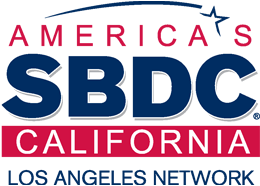Have you heard of the 80/20 rule, better known as the Pareto Principle? When applied to your business, 20% of your customers more than likely buy 80% of your products or services. So, how do you target that 20% of your business’ best customers? Follow the 10 steps below to observe your best customer’s behavior and develop a target market for your business.
1. The Average Sale: Do you know how much the average person spends when purchasing a product or service from your business? Begin with tracking your average sale in day, a week, and month for starters. Then, once you have a figure for the average sale, begin to track how many of your customers purchase over that amount, by how much (dollar amount), and how often. For example, if the average person spends $35 in your boutique, your top customers may spend $75, come back weekly, and may be more likely to refer a customer. Start tracking!
2. Common Characteristics of the 20%: Once you have your average figure and track every time someone spends over the average $35 from our previous example, begin assessing similarities in the customer’s characteristics. For example, the age, location, gender, marital or family status, income level, ethnic background, and needs (particularly for services.)
3. Why and What: Why do your customers buy from you, what do they care about, and what are they willing to pay? Why are your customers choosing you over your competitors? Engage your customers with a simple survey after purchasing or at the counter through friendly conversation. Is it because you are local, is it for a social cause, quality, convenience? If your competitors charge more or less, check out their business and assess what makes your business different.
4. Where: Where do your customers buy your product or service? Where are most of your sales coming from online or in-store? In our previous example, your customers may enjoy a personal shopper to help with their purchases or enjoy in-store only discounts or promotions. For service-based businesses, where is the sale coming from? Are your customers answering cold calls, online ads, referred by friends, looking at your website? Assess and track.
5. When: When do your customers buy? Is it seasonally, in the morning, evening, once a week, twice a month? In our example, maybe you find that many of your best customers come in after work from 5pm-7pm, maybe you can stay open another hour or have an invite-only promotion for your best customers where from 7pm-8pm the store exclusively stays open to your best customers once a month and perhaps offer a special promotion during that time.
6. Returning: Why will your customers come back? Did your customers receive great service, do they celebrate a special occasion with a purchase at your business, is it need-based, did the experience give your customer something to talk about? If all else fails, ask your returning customers why they come back. If Saturday is your best sales day, ask your customers to come back on Tuesdays for special promotions or exclusive deals. Get your customers in the habit of coming back.
7. Your Portfolio: Do your customers know all of the products and services you offer? It doesn’t hurt to train your staff to say for example, “Don’t forget we cater” or your insurance agent who primarily sells commercial insurance to say “We also sell home and auto insurance” or simply display signage or reminders on your website. Purchasing from you may just be convenient or familiar but they can’t buy from you if they don’t know what you’re selling!
8. Reaching the 20%: What marketing channels work best to communicate with that group? Let’s say your best customers at your convenience store are mostly retired individuals or senior citizens. The best channels to communicate with this audience may be through local newspapers, direct mail, and radio. Pay attention to the group’s behaviors and interests and use corresponding channels.
9. Ask for Referrals: Now that you may know the faces or names of your best customers, track them in a CRM system, and market directly to them. Ask them in person or through the appropriate channels to refer you to their friends or family. You could institute a referral program to reward your customers or give them an incentive to refer business.
10. Cross Promote: Cross-promote through partnerships with other businesses. Sometimes aligning your business with a larger company may give your business added credibility or alternatively selling complementary products may offer your customers convenience. When you search for partners, assure you both have the same target customers, but complementary products. For instance, if you own a marketing or creative consulting company prized on customer service, partner with a local, quality print shop and offer next day delivery of your designs to your customer’s doorstep.






